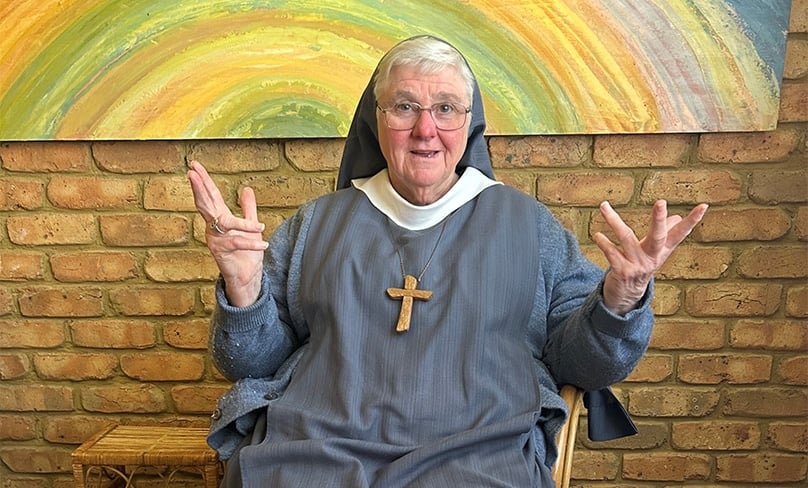
What initially seemed to be one of the most devastating things that could happen to the Benedictine Sisters at Jamberoo Abbey, has turned out to be one of the best.
Joining with the English Benedictine Congregation (EBC) has given the small community on the NSW south coast a “new family they didn’t know existed” and left them asking why they waited so long.
The Australians are one of three communities of nuns—along with the Kylemore Abbey in Ireland and the Mariavall Abbey in Sweden—to be accepted into the EBC, following the Vatican’s 2018 document Cor Orans, a framework of rules for contemplative orders of men and women religious.M
Affecting the world’s 38,000 cloistered nuns, Cor Orans’ most significant change was the obligation for individual small monasteries to join larger federations.
Despite appealing the change for more than two years, the Jamberoo community now regards their new status as a “blessing.”
Abbess Mother Hilda Scott said the union has given them an international voice not previously afforded them.
“The real beauty of the EBC is that they listen to the nuns. In the general world of the church, nuns (and in particular enclosed nuns) don’t have a voice,” she said.
“We truly believe we are now listened to and are valued, it’s truly beautiful.
“When we were initially told we had to join up with a congregation, we put in our objection because we thought, ‘Who on earth is going to understand us and what we do all the way down here?’
“We didn’t need anybody. We were doing just fine. We fought for two years and were denied, so really had no choice.
“We looked around and even though England is the other side of the world, our roots are English, we came from there, we were already good friends with the nuns at Stanbrook and they are part of the EBC.
“The nuns from Sweden and Ireland also looked to Stanbrook, who in turn were thrilled to the back teeth because they now had more women.
“It had to be a formal decision. It was the most moving thing, the EBC voted and very quickly I was back in the room and the monks, bless them, were standing up clapping.
“I don’t know that I held back tears, you couldn’t deny the warmth, the love and the acceptance.
“They wanted us and, in our case, more so because they knew we hadn’t jumped in, it had taken us two years to agree to join them, and they knew that we started out only because we had to.
“We didn’t initially want to join anybody, but they took all that onboard and still welcomed us with open arms.
“Abbott Christpher said in the meeting, ‘Australians have a habit of saying things as they are, you bring an openness, and a freshness and that’s something that we sorely need.’
“The whole thing has been such a blessing and I’m so glad we did it.
“We put our future in God’s hands, and like he always does he looked after us.”
The reforms called Cor Orans (“Praying Heart”) were released in 2018 and intended to affirm the church’s esteem for and appreciation of the contemplative monastic life, and to allow it to flourish.
Presented by Archbishop José Rodríguez Carballo, secretary of the Congregation for Institutes of Consecrated Life and Societies of Apostolic Life, it provided instructions on how to apply Pope Francis’s 2016 Apostolic Constitution Vultum Dei Quaerere (“Seek the Face of God”).
